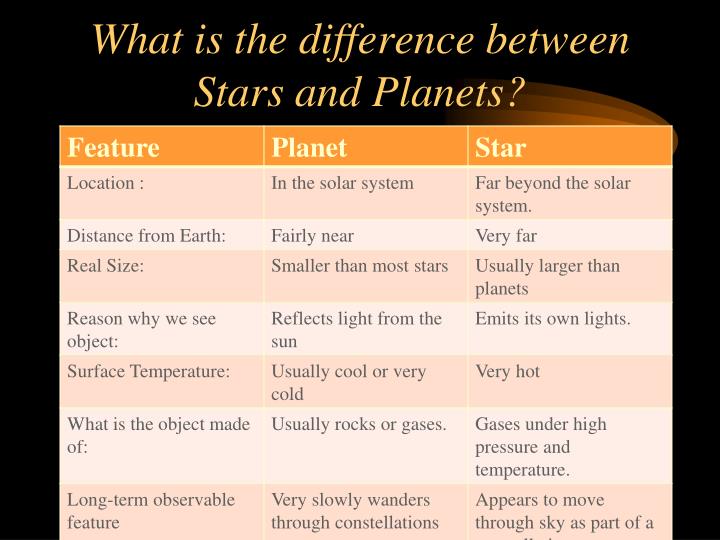
PPT Grade Nine Science PowerPoint Presentation ID4250937
1.Planets are stars are both heavenly bodies mostly observable to the naked eye. 2.Stars are large collections of gas that have a nuclear reactor at their core, whereas planets can be almost as large but lack the nuclear reactor.

Size of and stars. Amazing comparison YouTube
Star A star is a celestial body having its own light and energy. A star is a huge glittering ball of hot gas, mainly consisting of Hydrogen and Helium. Stars are giant, luminous spheres of plasma collapsed together by gravity. Stars are responsible for the manufacture of heavy elements like Carbon, Nitrogen, and Oxygen.

vs Stars FlatEarth.ws
Ever find yourself looking at the night sky, wondering whether that bright spot is a star or a planet? We understand your confusion, they do look awfully similar! Our infographic is here to help you. You'll get useful tips on how to tell stars and planets apart in the sky and learn how they differ in terms of size, mass, and composition.
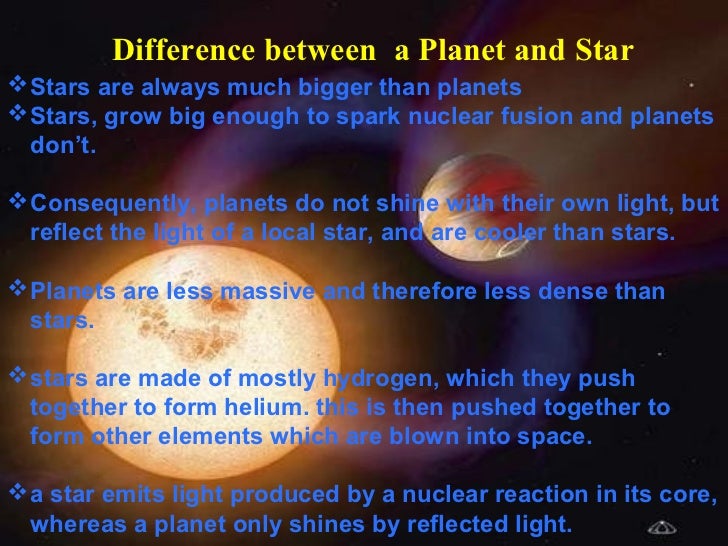
The Solar System by Diana Meneses (I Made)
The difference Between Star and Planet is that a star is a luminous celestial body that generates energy through nuclear fusion in its core, while a planet is a non-luminous celestial body that orbits a star and does not generate energy through nuclear fusion.

How to Tell the Difference Between and Stars
Definition Key Differences Conclusion Comparison Chart Definition of Stars Stars can be understood as the glowing ball, consisting of plasma, clasped together by its gravity. Plasma is an intensely-heated state of matter. Stars are made up of gasses like hydrogen, helium and similar other light elements.
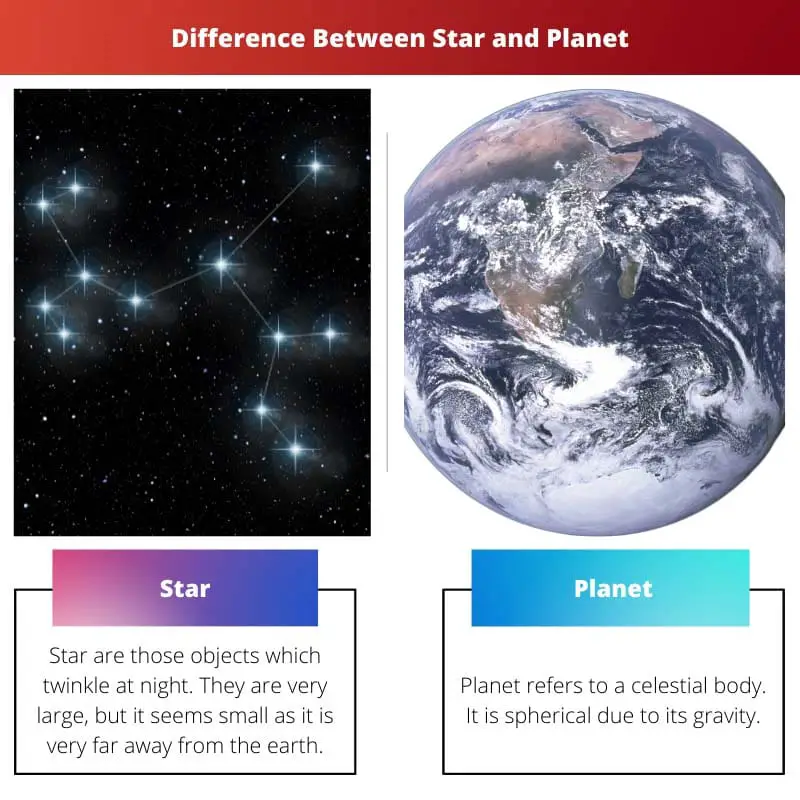
Star vs Difference and Comparison
- WorldAtlas What Is The Difference Between A Star And A Planet? Planets and stars are two very different objects. At first glance, there are obvious differences between them. Planets are small and dim, while stars are massive and bright. What makes a planet a planet and a star a star? Do stars begin as planets? Can a planet become a star?
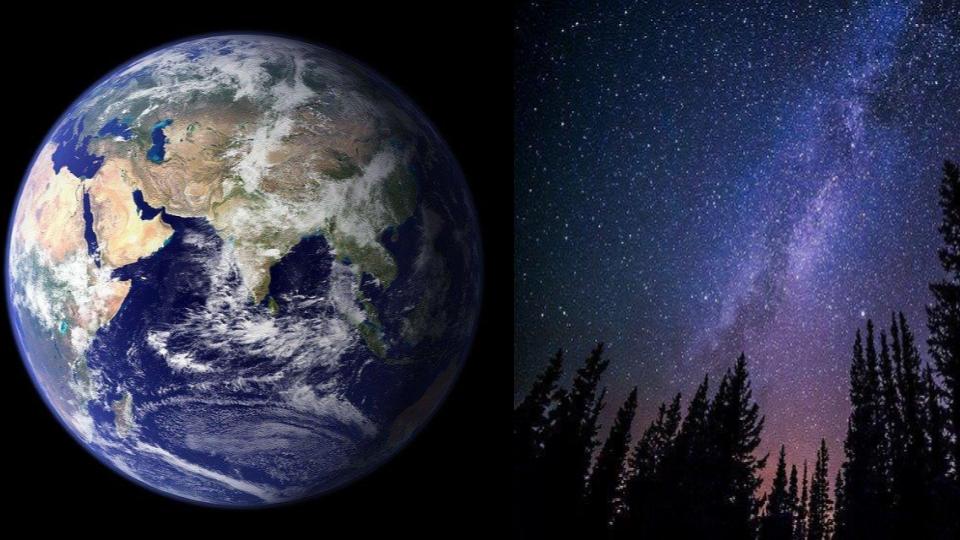
10 Differences between stars and DewWool
Here are some of the main differences between stars and planets: Definition: A star is a celestial object that generates energy through nuclear fusion, while a planet is a celestial body that orbits a star and does not generate energy. Size and Mass: Stars are much larger and more massive than planets. The smallest stars are still larger than.
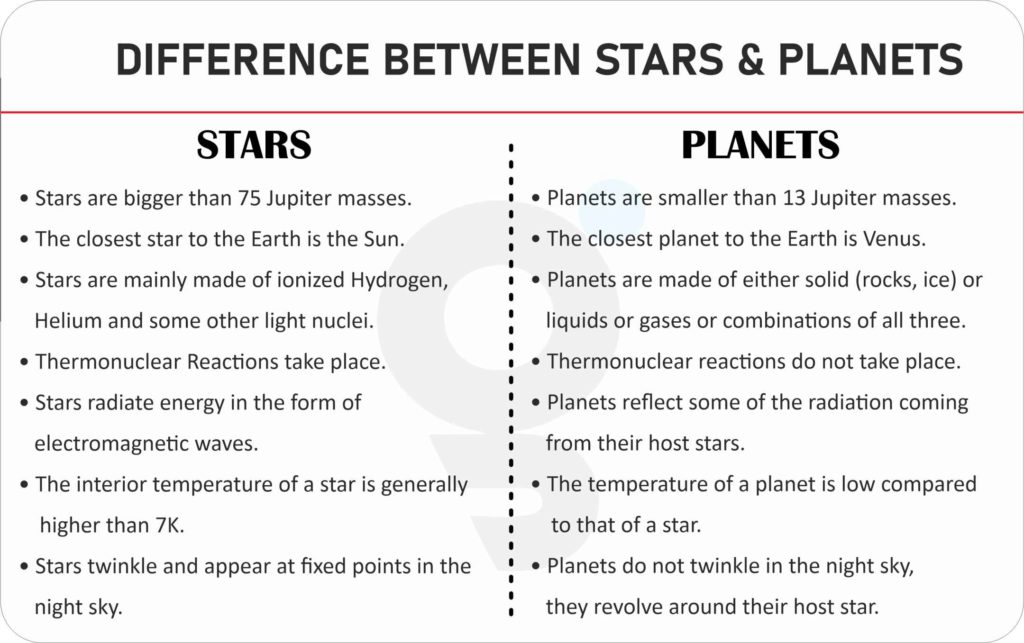
What is Difference between Stars and
Audience: 3rd grade and older This slide shows the difference in temperature between planets orbiting an M Dwarf star and our Sun. The second view shows their relative distance from their star.. can capture the elusive spectra of hot-Jupiter planets by comparing observations including light from both the star and planet to those containing.
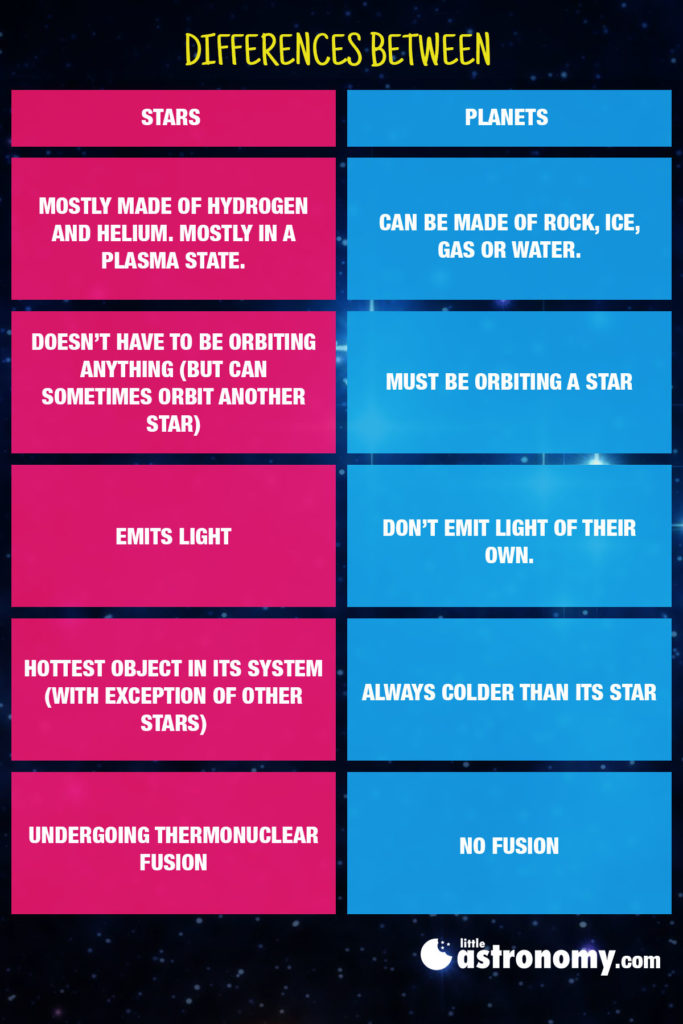
The difference between and stars Little Astronomy
Start Quiz The key difference between stars and planets in tabular form is given here. Learn the detailed comparison between stars and planets by registering with BYJU'S
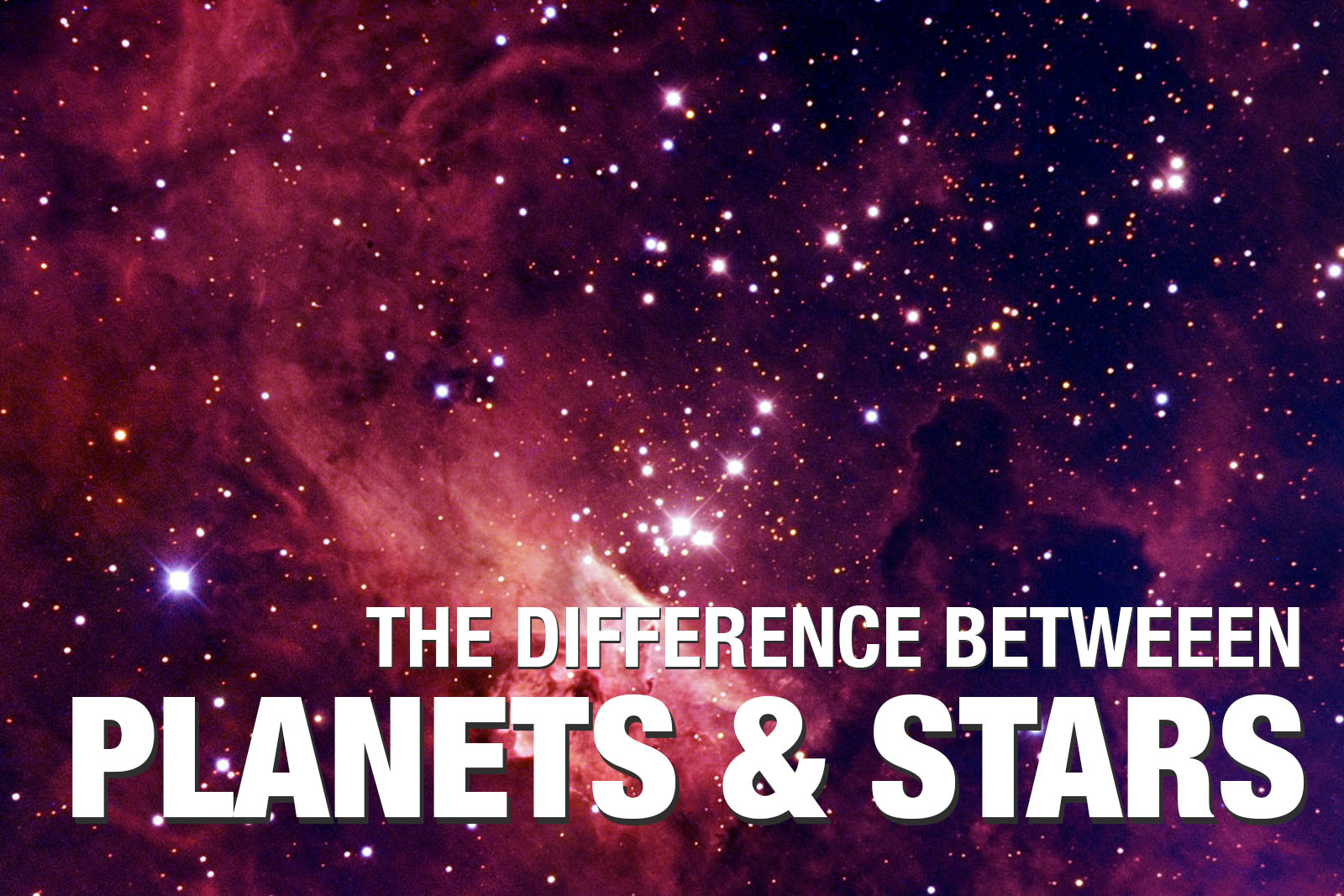
The difference between and stars Little Astronomy
The five main differences between planets and stars are: Planets orbit around a star. Stars do not orbit planets. Planets are made of rock, ice, gas or water. Stars are made of plasma. Stars emit their own light. Planets don't. Planets are always colder than the stars in their system. Inside a star, nuclear fusion is constantly happening.

Solar system and galaxies Royalty Free Vector Image
1. Planets do not twinkle in the sky. 2. They have no light. 3. They revolve around the sun. 4. Planets are small as compared to star. Stars 1. Stars twinkle in the sky. 2. They have their own light. 3. They are fixed at a point. 4. They are very big in size. Tags Stars and Planets Stars vs Planets Show more Previous Post Next Post

Comparing stars and
Another way to tell the difference between stars and planets is by their size. Stars are usually much smaller than planets, and they often appear as points of light in the sky. In contrast, planets are much larger and often have a distinct shape that can be seen with the naked eye. Finally, stars are typically found in clusters, while planets.

Solar System Formation Difference Between Star and YouTube
More Information on Planets One major difference between Sun and planet is that planet is incredibly smaller in size. Furthermore, a fundamental characteristic of a planet is that it must revolve around a star, which in our solar system is the Sun.
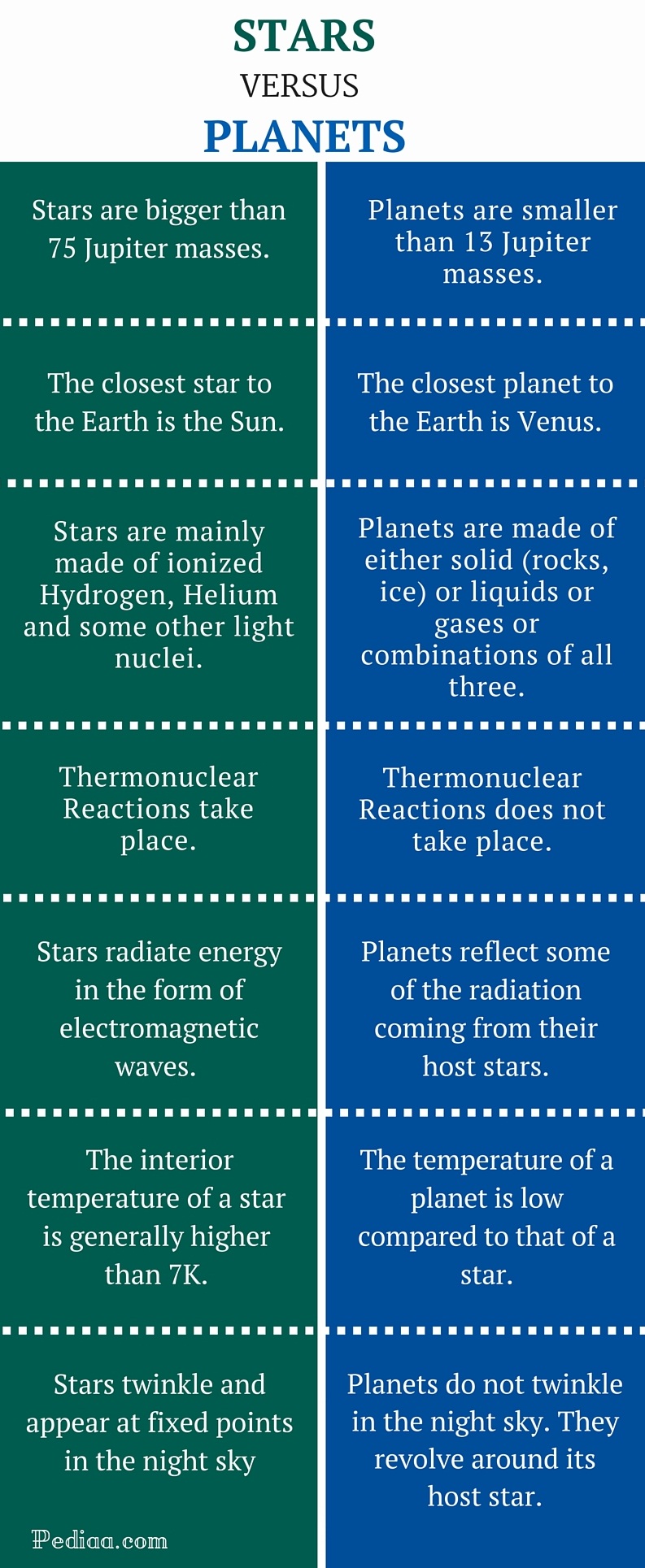
Difference Between Stars and
Jared shows us the difference between stars and planets. Visit our channel for over 300 videos that explain science! Please subscribe.https://www.youtube.com.

How to Tell the Difference Between and Stars 12 Steps
What is the primary difference between stars and planets? Can a planet become a star? Difference between stars and planets 1. Origin 2. Composition 3. Orbit 4. Lifespan 5. Diameter 6. Mass 7. Atmosphere 8.
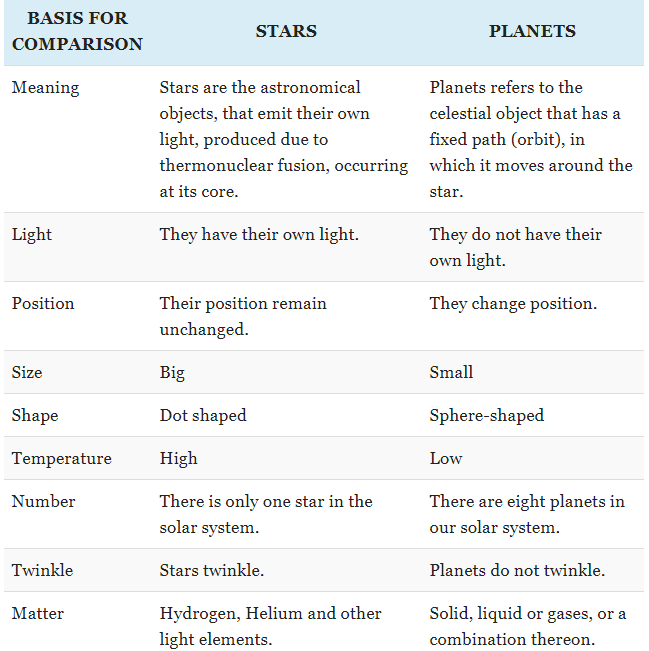
Revision Notes Class 8 Chapter 17 Stars and the Solar System
What are the differences between a star and a planet? Last Updated: February 6, 2023 Our universe is host to billions of celestial bodies. From various types of galaxies and meteors to planets and stars, observing them can help us develop our understanding of the universe. However, they can often be difficult to distinguish from Earth.